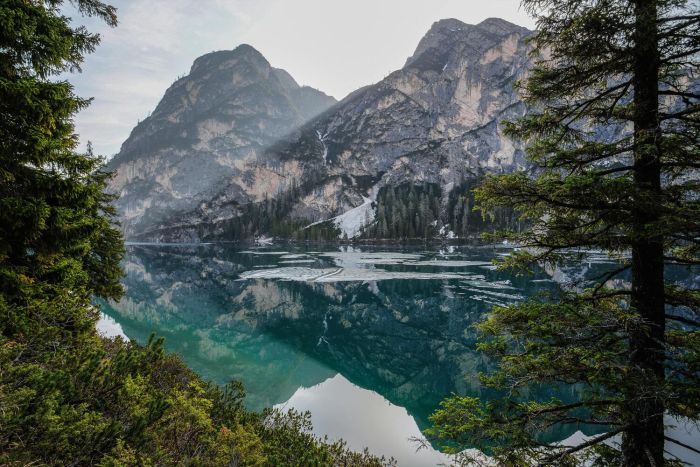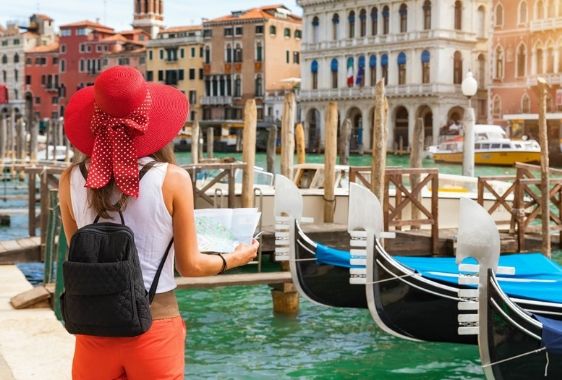Ancient Rome was founded on seven hills - the Capitoline, Palatine, Celium, Aventine, Quirinal, Viminal and Esquiline - which engendered various neighbourhoods with their own distinctive characteristics and identity.
THE VATICAN - Ratified in 1929 as an independent state, the Vatican City houses St Peter's basilica, the largest church in the world and an architectural achievement of the Renaissance, the Vatican Museums, with magnificent works of art, Michelangelo's famous Sistine Chapel and the Raphael rooms which can be seen on our Vatican Walking Tour, along with lush and immaculately-cured gardens.
ANCIENT ROME - This are goes from the Via dei Fori Imperiali, where the impressive Forum stands to the Colosseum, the Circus Maximus and the baths of Caracalla. This important area of Rome can be discovered on our Ancient Rome Walking Tour.
HISTORICAL CENTRE - The area within the Aurelian walls is referred to as the historic centre. Masterpieces of the 16th and 17th Century by Bernini, Borromini, Michelangelo and Caravaggio can be found here, along with the famous landmarks of the Spanish Steps, Piazza Venezia, Pantheon and Piazza Navona that are all featured on our Original Rome Walking Tour.
THE AVENTINE AND TESTACCIO - The Aventine is one of the most elegant areas in Rome with the Basilica of Santa Sabina and the church of Sant'Alessio next to the orange gardens. The keyhole of the Maltese embassy offers a wonderful view of St. Peter's dome. Testaccio, between the Tiber river and the Aventine, is where Caius Cestius' Pyramid and the Protestant Cemetery ( tombs of Keats & Shelley) can be found. Mt. Testaccio is a hill made of the broken amphorae deposited between 140 and 255 A.D. Testaccio is also a good area for finding traditional Roman cuisine. Its restaurants are less frequented by tourists and prices tend to be among the more reasonable of Rome's centrally located restaurants.
TRASTEVERE and the JEWISH GHETTO - The Trastevere is a very Roman Neighbourhood and its residents call themselves the " real Romans". This characteristic part of the city has many pizzerias and restaurants, bars and music venues, and is a very vibrant part of the city. Across the river Tiber, towards the historical centre of Rome we find the Jewish Ghetto of Rome that houses one of the oldest surviving Jewish communities in Europe. The Via del Portico d'Ottavia with Renaissance and Medieval architecture is the centre of Jewish life.
MONTI, VIA VENETO, and the ESQUILLINE HILL - Monti hosts various landmarks like the Basilica of St. Mary Major, the Trevi fountain and Trajans Market, as well as numerous ministries and the Quirinal palace. The elegant Via Veneto, made famous in Fellini's "La Dolce Vita", is one of the most photographed streets in the World.
PRATI, FLAMINIO, and PARIOLI - Prati, behind Castel Sant'Angelo and next to the Vatican, is a great place for shopping. Crossing the river at Ponte Milvio leads to the soccer stadium (a bizarre architectural tribute to Mussolini that is probably the only left still intact in Italy) and Via Flaminia which passes through the affluent residential areas. Parioli, north of Villa Borghese, is one of the most elegant and expensive residential areas in Rome.
SAN LORENZO - Just outside the city walls near Via Tiburtina is San Lorenzo. Not far from the main Rome train station, in the 1880's it was a working class area of the city. Now it is popular with students due to its close proximity to La Sapienza University. The area boasts numerous restaurants, clubs and bars.
SAN GIOVANNI, NOMENTANA and MONTEVERDE - The 19th century San Giovanni area is built around the Basilica of St. John in Lateran. Outside the walls are the areas of Nomentana, and the charming Monteverde, where the wonderful Villa Doria Pamphili Park is located.
EUR and OSTIA - EUR was designed for the 1942 World's fair which never took place. Fascist inspired buildings include the Palazzo della Civita del Lavoro and the Palazzo dei congressi. Continuing down Via Cristoforo Colombo is the coastal town of Ostia and the excavations of Ostia Antica, Ancient Rome's port. After Pompeii, these are probably the most important excavation sites in Italy.







